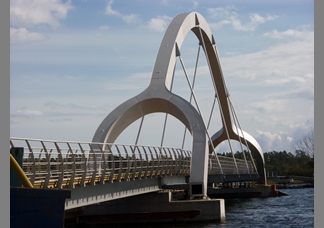
The overall life-cycle costs associated with the structure was the key reason for choosing the material for the bridge arches according to Ronny Södergren, managing director of Stål & Rörmontage AB, the company responsible for the construction of the bridge.
Unlike carbon steel, stainless steel doesn’t require surface treatment and only minor maintenance, therefore the benefits of using duplex are significant from an economic perspective as well as an environmental perspective.
“We can avoid repainting costs associated with the bridge arches and rails every 15th year. Ultimately this means approximately a EUR500,000 calculative saving in maintenance costs with 2012 price levels,” said Södergren.
The high strength of LDX 2101® also enables lighter weight design. Less material is needed for the bridge arches, which means lower environmental impact of the whole structure.
“Simply put, the customer gets ‘more bridge for the money spent’ with duplex steel,” sais Anders Finnås, who is responsible for the building and construction segment at Outokumpu in Degerfors, Sweden. “Better price stability together with the effective use of the material provides overall a very cost-efficient and attractive design.”
The bridge will be 756 meters long in total and is estimated to be ready by the end of 2012. The bridge connects the center of Sölvesborg, with the new district called Ljungaviken Listerlandet.

